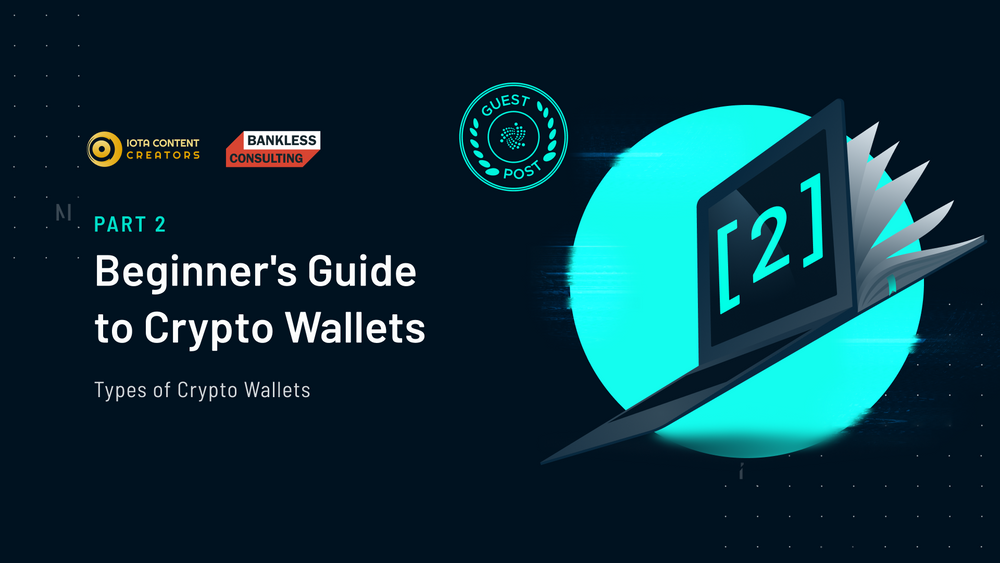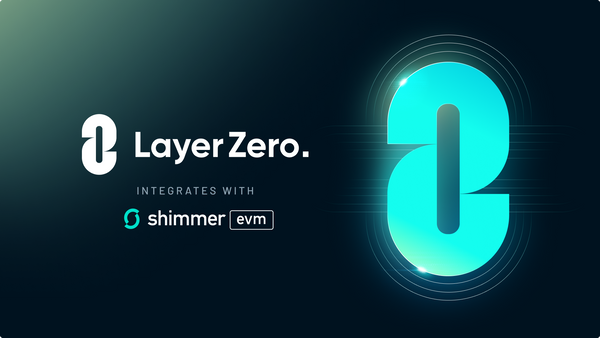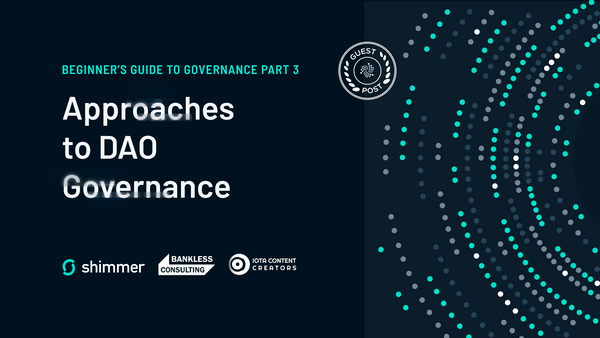Beginner's Guide to Crypto Wallets: Part 2
Types of Crypto Wallets
In Part 2 of our guide to crypto wallets by the IOTA Content Creators DAO and Bankless, we look at the main differences between custodial and non-custodial wallets and hot and cold wallets.
Read Part 1 here.
Custodial (hosted) wallets vs. Non-custodial wallets
Custodial wallets are wallets that are essentially controlled by others. In a custodial wallet, private keys are managed by someone else on your behalf. This could be Coinbase, Crypto.com, etc. Whatever jurisdiction you’re in, there is probably a crypto exchange that has a fiat on-ramp. This allows you to convert your local currency into crypto assets.
Typically, a user’s first interaction with crypto will be through a custodial wallet. The best thing about a custodial wallet is that it’s a very easy on-ramp. It manages your keys and you log into it using a username and password. If you forget your password, there are ways to recover and access your account.
However, while there are a lot of advantages to custodial wallets, particularly for beginners, the account can be drained if the exchange is hacked since it is hosted by others. This has happened and will continue to happen. As we see more regulation in the space, more of these exchanges are being held to a certain standard in terms of making their customers whole. Nevertheless, even in recent months, we’ve seen exchanges going broke. Since they’re not part of the traditional banking system, you use custodial wallets at your own risk.
The counterpoint here is non-custodial wallets. These are wallets in which you control the private keys. Two examples are Firefly and MetaMask. With these wallets, you are provided your seed phrase and you are entirely responsible for your own security. If you lose the private key your crypto is gone forever! You’ve probably heard sob stories about people losing their private keys, such as this recent one in the UK about an individual trying to raise money to go through a landfill to look for a hard drive that contains the private keys to hundreds of millions of dollars worth of bitcoin. That’s the level of desperation people will go through to try and find private keys that they have lost.
There’s a saying in crypto: “Not your keys, not your crypto.” This means if anyone other than you controls your private keys, they can easily drain your accounts. If they get hacked, you get hacked. On the other hand, if your private keys are only in your possession, then the responsibility lies with you. This is both a good and a bad thing: it’s good if you understand the risks and employ good security practices, but bad because if something goes wrong, you’re on your own.
Remember:
- Custodial wallets: Your private keys are managed by someone else. Your account details may be recoverable. You gain convenience but give up some security.
- Non-Custodial wallets: You manage your private key. If you lose your private key, you lose your assets. You give up some convenience but gain much more security.
Hot wallets vs. Cold wallets
Hot wallets are called ‘hot’ because they’re connected to the internet. They might be browser extensions, desktop apps, mobile apps, etc. Firefly and MetaMask are also examples of hot wallets but new wallets are coming out all of the time. The problem with hot wallets is that, because they’re connected to the internet, they are vulnerable to hacking or phishing. Quite often, people will lose the contents of their hot wallet because they were tired, it was the end of the day, they clicked on some link, and all of a sudden they’ve granted access to their wallet. At the same time, hot wallets are very convenient because they’re connected to your web browser or your phone and that’s all you need to issue transactions. This makes them ideal for people handling small amounts of crypto or making frequent trades since there’s less friction. The takeaway with hot wallets is that you are giving up a portion of security to gain convenience.
The counterpoint to hot wallets is cold wallets. A cold wallet contains or literally is the private key that allows you to sign transactions. Two types of cold wallets are paper wallets and hardware wallets. Having that private key on a piece of paper stored in a safe somewhere and a second copy of it in a safe or deposit box is probably as secure as you can get. Since a cold wallet is not always connected to the internet, the only people who can access it are the people that have access to your safe or safe deposit box. These wallets can’t be hacked, but you can imagine how inconvenient it is if every time you want to make a transaction you have to go to your safe, pull out the piece of paper, and type in the very long string of letters and numbers.
Hardware wallets like Ledger or Trezor make the cold wallet approach much easier. These wallets don’t sign the transactions directly; instead, they sign an intermediate transaction. When using a hardware wallet, you first plug the device into your computer and unlock it by clicking buttons on the device. When making a crypto transaction, you click the buttons on the device to verify the address. This way, the hardware wallet is the middleman and grants access to your private key. While they are a little less convenient, there’s less risk of hacking because they are not plugged into the internet permanently. Because of this, they are much more secure. The ideal use case for cold wallets is if you have a substantial amount of cryptocurrency or you’re storing it for a long time.
Remember:
- Hot wallets: Connected to the internet, so potentially vulnerable to hackers and phishers. Convenient for beginners or those dealing with small amounts of cryptocurrencies, but less secure.
- Cold wallets: Not connected to the internet, so cannot be hacked. Not as convenient, but much more secure. Hardware cold wallets do cost $100 or more, so they are more appropriate if you hold substantial amounts of cryptocurrency or value security over convenience.
Next: Part 3 How To Choose Your Wallet
Beginner's Guide to Crypto Wallets
Part 1 What is a Crypto Wallet?
Part 2 Types of Crypto Wallets
Part 3 How To Choose Your Wallet
Part 4 Using Your Wallet
Find out more about the IOTA Content Creators DAO on Twitter and follow their newsletter on Medium. You can watch the full series of IOTA x Bankless DeFi education videos on YouTube. Our special thanks to 0xKB for hosting the Bankless session and to DigitalSoul.x. for preparing the original copy of this article for the IOTA Content Creators DAO newsletter.
Also in this series
Beginner's Guide to DEX vs. CEX
Follow us on our official channels for all the latest Shimmer news:
Discord | Twitter | LinkedIn | Reddit



